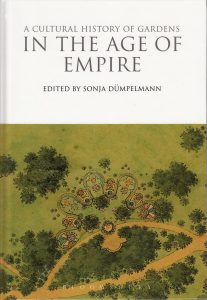A Cultural History of Gardens In the Age of Empire
 As much as the nineteenth and early twentieth century gardens and their designs were a product and representation of industrialisation and urbanisation, they were also motors of change. Gardens became an industry in and of themselves. They were both the last resting places of the dead and cultivated plots for survival. Gardens were therapeutic environments regarded as civilising, socialising and assimialting institutions, and they were designed and perceived as social landscapes and community playgrounds.
As much as the nineteenth and early twentieth century gardens and their designs were a product and representation of industrialisation and urbanisation, they were also motors of change. Gardens became an industry in and of themselves. They were both the last resting places of the dead and cultivated plots for survival. Gardens were therapeutic environments regarded as civilising, socialising and assimialting institutions, and they were designed and perceived as social landscapes and community playgrounds.
Rich with symbolism, gardens were treated as the subject and the setting for literature and painting and were often considerd works of art in themselves. In a time of empire, when plants were drawn from across the globe, gardens also reflected territorial conquest and expansion and they fostered national, regional and local identities.
A Cultural History of Gardens in the Age of Empire presents an overview of the period with essays on issues of design, types of gardens, planting, use and reception, issues of meaning, verbal and visual representation of gardens, and the relationship of gardens to the larger landscape.